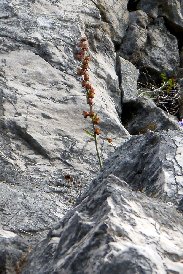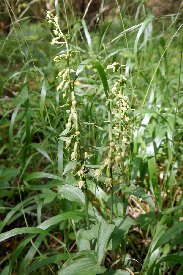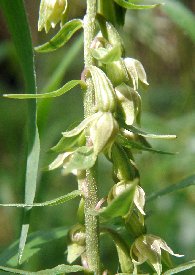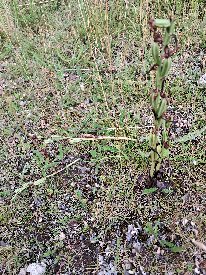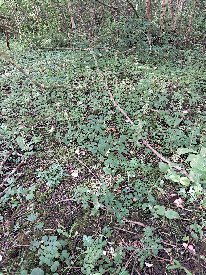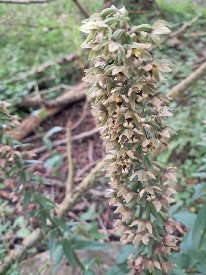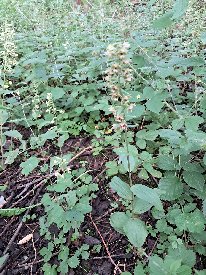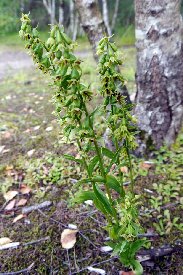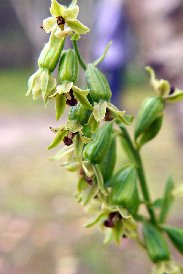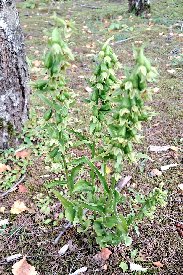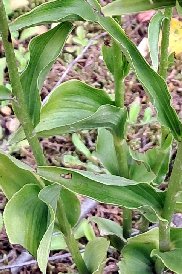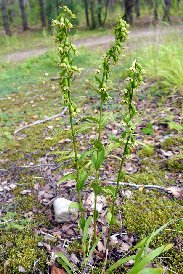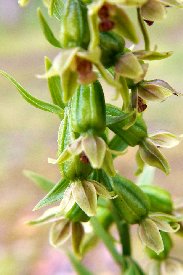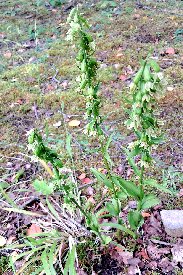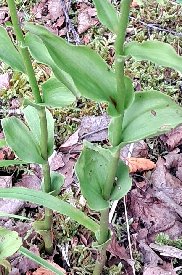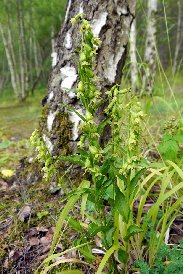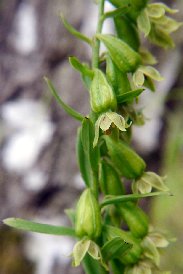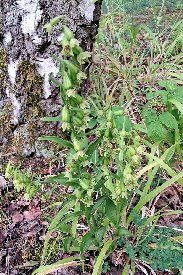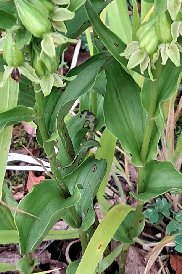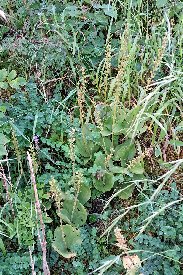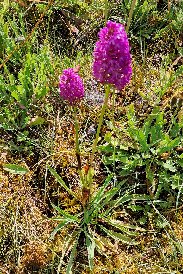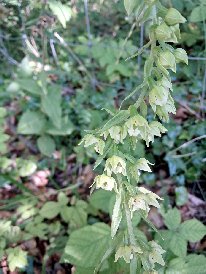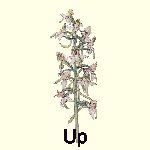|
|
|||||||||||||
|
|
|||||||||||||
 |
|
8th July 2024 Great Orme (SH 75421 83631) A bit of a wasted journey this year. We may have been a bit late, but there was no evidence of any Dark Red Helleborines roadside this year, despite the spring and early summer rains. All that could be seen were three plants growing high in the rocks. Not certain if they were still in flower even!. Iím getting too old now too go prancing around on the limestone terraces 100 metres above this site looking for more A good year for the helleborines on the LLay side. Both Dune and Green-flowered are in good numbers. I could post yet more photos of them, but youíve probably seen the same plants from previous years. I had decided that this year I would look for hybrids of these species (yet again). The spot where a couple of years ago hosted a couple of possibles was devoid, but finally I come across a group of three that fulfilled all the criteria. Looking like typical GFH, a close examination reveals DH characteristics with a hairy ovary with the stem base tinged violet. In GFH these would be hairless and unpigmented. Though I do not have a good close up of the leaf margins, a zoom in on the bracts gives a suggestion of the irregularities that are a feature of GFH. Good examples of Epipactis phyllanthes x E. dunensis. As the overall appearance is that of GFH I am assuming that is the maternal species and so comes first in the Latin naming. A check on the Bee Orchids seen a month ago shows may have set seed, but also many of the fruiting stems had rotted off. The result of much rain perhaps, soddening the soil? Bouyed-up by that hybrid I head for the Gwersllt side. Hundreds of Dune Helleborines and one Broad-leaved Helleborine must be a candidate fro the most flowers on a stem. However, no signs of any hybrids even where they grow side by side. If Alyn Waters` helleborines are doing well in 2024, the same cannot be said here. I commented last year that scrub was taking over a bit. It is getting established now. However taking a path unexplored before we come upon a nice few clumps of Green-flowered Helleborines growing in sandy soil under birch trees ,,,, or are they? Somehow they do not look quite typical. The species itself is quite variable with a number of taxa claimed based upon variations in the epichile and hypochile. However, without resorting to verbal cliches, I am considering whether these may be a species not placed within the the British flora. Well, there have been a few continental species holidaying here, and deciding to be full-time immigrants, and the Warwickshire Dune Helleborines were originally said to be Epipactis muelleri by the county recorder no less, so why not. Firstly any candidate would not be E. muelleri; that looks more like a Broad-leaved Helleborine, but what about Epipactis confusa? In fact this would be the only foreign candidate, but has been lumped into E. phyllanthes by some authorities. There have been claims of find from Scotland and Northumberland apparently, and a plant on Hutton Roof has also been mooted. So it is not a species seemingly favouring sunnier southern climes. What should I look for. Firstly, some photos; taken with both camera and phone, hence differences in colour. These rather robust plants look nothing like the lax flowered, rather spindly photo in Delforge, but that may be a matter of age, soil and light in combination. A Google search only throws up images of E. phyllanthes and that confusa is a synonym - repeatedly. One gets the feeling that each have copied another. Certainly these plants seem to be in fine fettle compared the phyllanthes in the other parts of the wood. What is needed is a very close look at the reproductive parts, but as you can see these plants are well beyond that. The interior of the hypochile, or cup, should be a pale chocolaty brown rather than green or white. One photo does actually suggest that, but I would need much more clarity. One text book states that the reproductive parts wither very soon compared with E. phyllanthes, and these certainly have done. Also the birch suggests a more acid soil, as favoured by E. confusa. The leaves should also be rounder. Hard to say from these photos as they seem to be folded over; and anyway that is a comparative feature. I have noticed that the phyllanthes at Alyn Waters had rounder, darker green leaves than dunensis. These leaves seem to be mid way between the two. Lastly, phyllanthes has leaf edging that is irregular, while confusa has smooth edges. Do the leaf close ups show this? I suspect I need to get even closer. A quick outing here, mainly because I realise that we have not been here this year. It is too late for the Fragrant Orchids which have largely gone over, and the where the Frog Orchids now the grass is now too long to see anything. Most likely i will tread on what I am looking for if I try. There is a nice clump of Common Twayblades with fruiting stalks and a nice pair of Pyramidal Orchids only seem here once before To be honest. I am not expecting much here today, but it is a nice interesting walk on a sunny day with loads and loads of Broad-leaved Helleborines. In fact I recommended this place to two other enthusiasts saying that there are more BLH here than the whole of Buckinghamshire. They were blown away by the numbers. But it is not a wasted day orchidwise as I stumble across a E. helleborine var viridiflora. That is the one lacking flowe colour pigments and recognisable by lack of colour within the cup. A nice find considering
|
|
|
||||||||||||||
